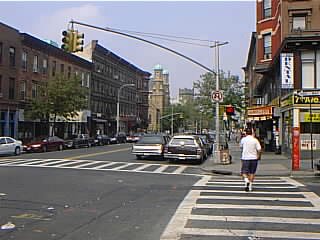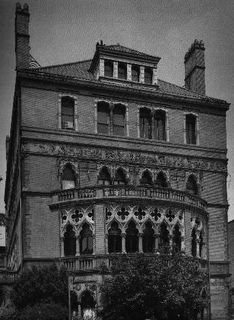I moved to Park Slope in August 2004. When I told my grandma – a lifelong Brooklynite – where we bought a condo, she replied, “well that’s not a great area.” Of course, she was talking about 20 or 30 years ago. It turns out, the Slope today is a great area. The combination of beautiful 19th century architecture, a clear grid system of streets, and proximity to
Friday, March 04, 2005
Geographic Profile: Park Slope, Brooklyn

7th avenue, looking north from about 8th street
Physical Design
Park Slope, as its name would suggest, is built on a gently sloping hill, with the park at the top. The neighborhood is defined by a grid system of streets, including two main commercial avenues – 5th and 7th – running north-south, and about 20 residential side streets running east-west, with the named and lower numbered streets at the northern end.
Both the streets and the avenues of the Slope have perfect proportions to accommodate a comfortable walking lifestyle. The avenues – lined with mostly four- and five-story buildings that are built fully out to the sidewalk – features only one lane of traffic in each direction, buffered from the curb by parked cars. The streets are mostly one-way, except for

the litchfield villa, built in the 1850's in what is now the western edge of prospect park. mr. litchfield owned much of what is now park slope.
History

a typical park slope street
Culture
Park Slope has a reputation as a politically progressive activist community. Much effort has been expended in the preservation of the historic integrity of the neighborhood, and Park Slope is the “Recycling Capital” of
Social concerns also occupy a high place on the neighborhood’s agenda. The area is home to numerous civic, merchant and social organizations that offer many forums for social discourse. The Park Slope Food Co-op is the largest member-owned and operated food co-op in the country, with over 10,000 members, many of whom participate on the Co-op’s political committees, addressing issues like genetically modified foods and the use of pesticides. The area also prides itself on its diversity and contains a spectrum of socioeconomic, ethnic, and cultural backgrounds. For example, it has the highest lesbian population in the City and has played host to
Of course, when walking the streets of Park Slope, you can’t help but notice all the babies, and all the yuppies. It seems like as soon as

the montauk club on 8th avenue
"Gentrification?"
As you can tell, there are many things I love about my neighborhood, but I tend to have mixed feelings about gentrification. On one level, it is clear that the neighborhood's hot real estate market is driving out families who will have to find another place to live. But that has already happened in Manhattan; which is why more people are moving into the Slope to begin with. I always feel awkward walking home from work in my business suit past the stoop-sitters who camp out all day on my block. But my family also has history in Park Slope. At the turn of the century, my Russian immigrant great grandfather owned a grocery store on 5th avenue, and he lived with his family on 6th avenue at 11th street until roughly the mid-1920's. So it seems different families have been replacing eachother for generations. Gentrification is often discussed in terms of it being a problem, but it is a complex topic, especially in relentlessly free-market American cities like New York, where everybody wants a piece of the same pie.